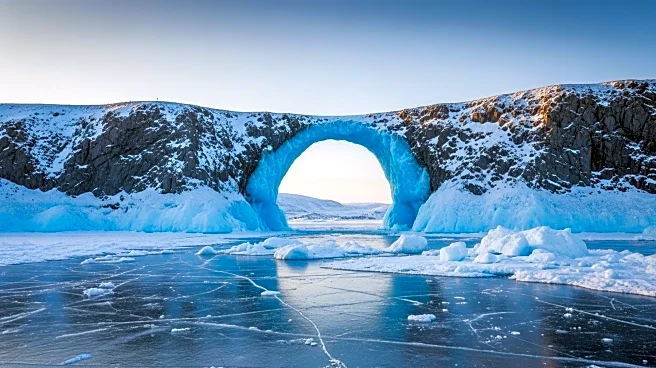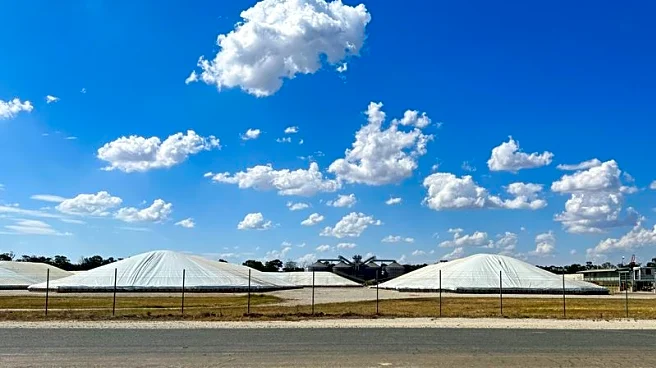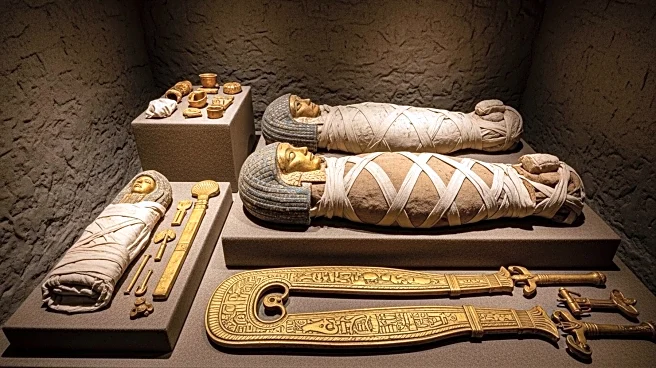What is the story about?
What's Happening?
A team of Turkish archaeologists has uncovered over 100 stone artifacts from ten sites along the Anatolian coast, suggesting the existence of a now-submerged land bridge between Asia and Europe during the last Ice Age. This discovery challenges the prevailing theory that early humans primarily migrated to Europe from Africa via the Levant and Balkans. The artifacts, including Paleolithic hand axes and cleavers, indicate human presence in Ayvalık's landscapes, offering an alternative narrative of early human migration. The study, published in the Journal of Island and Coastal Archaeology, highlights Ayvalık as a promising site for future research on human dispersals in the northeastern Aegean.
Why It's Important?
The discovery of a potential land bridge between Asia and Europe during the Ice Age could significantly alter the understanding of human migration patterns. It suggests that early humans may have had multiple routes into Europe, which could lead to a reevaluation of the technological and cultural exchanges between regions. This finding could impact archaeological research priorities, encouraging more exploration in previously overlooked areas like Ayvalık. The presence of tools similar to those found across Africa, Asia, and Europe indicates shared technological traditions, which could reshape theories about early human interactions and development.
What's Next?
Further research is needed to substantiate the theory of the land bridge, including artifact dating, stratigraphic excavations, and environmental reconstructions. The team plans to search for additional artifacts on the Aegean sea floor to confirm the region's role in human migration. These efforts could lead to new insights into the prehistoric connections between continents and the movement of early human populations.
AI Generated Content
Do you find this article useful?















